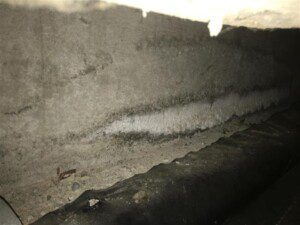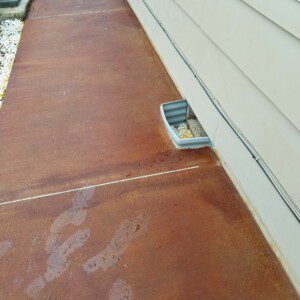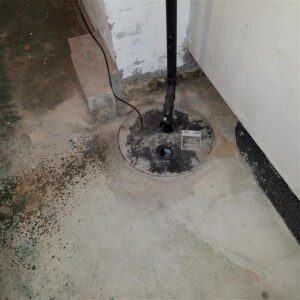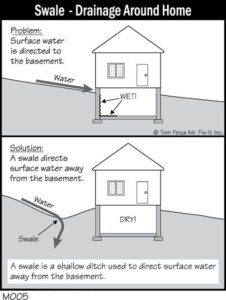
Water will inevitable move down a negative slope towards the home. When it contacts the concrete foundation wall, it will seep into the concrete. While butyl sealants can be applied to help prevent moisture intrusion, raw concrete is porous. Water also seeps through the soil under the crawlspace. In some cases, groundwater naturally rises to the surface and emerges at the excavations in crawlspace soil. Unless drainage systems are installed to channel surface and groundwater away, serious problems can result.
Saturated soil under the footer, or base of the foundation, may compress or shift. This can strain and crack the foundation. Foundation movement can cause extensive interior damage ranging from drywall cracks to sloping floors and shifted window and door frames.
Expansive clay soils are notorious for softening when wet, allowing concrete piers to shift under load. On slopes, they may tip, weakening support for the floor system. When these clay soils dry out, they contract and the surface cracks, and may easily crumble.
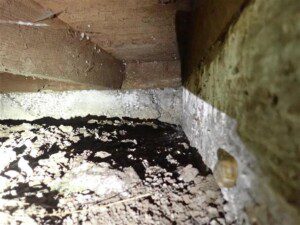
That moisture evaporating from crawlspace soil is not good either. High humidity fosters mold and very high humidity can increase the moisture content of wood framing to levels that allow rot.
Vapor barriers are important to reducing humidity. Sheets of plastic 6 mil or thicker can greatly reduce the amount of moisture that evaporates into the crawlspace from the soil. Vapor barriers should cover all exposed soil. Efflorescence clearly shows that large amounts of water have evaporated from an area over time. Covering all soil is challenging, particularly with large numbers of concrete piers and wooden columns supporting the floors.
In very wet conditions, vapor barriers should be lapped up and sealed to the foundation walls. Similarly, seams should be overlapped and sealed, to reduce water vapor to a minimum. This can allow a house to stay healthy, even with streams of groundwater flowing beneath it.
Foundation vents are central to reducing humidity in the crawlspace. Unfortunately, when landscaping and exterior features are installed after construction, vents may end up at or below grade. This can allow water to flow into the crawlspace directly. Vent wells are concrete, plastic or metal walls that are installed around vents to allow airflow while preventing water intrusion. To work properly, they should extend above the grade enough to divert surface water, and be sealed to foundation walls. The bottom of the well should lay below the vent opening and be filled with several inches of pea gravel to absorb water that leaks in and to prevent groundwater rising to the vent opening.
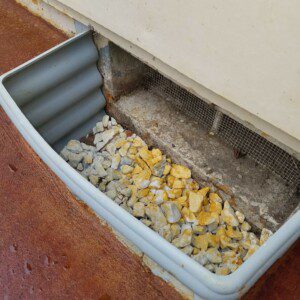
Wood destroying insects, such as subterranean termites, anobiid beetles and carpenter ants, take advantage of moist soils and wood to invade homes. Unfortunately, infestations are often only discovered after insects have done extensive damage, so avoiding conducive conditions, and correcting them when they develop, is key to preventing destructive infestations.
While problems related to grading are many and can be serious, they are solvable. Minor cases can sometimes be resolved with some shovel-work, re-shaping the soil as needed. Foundation perimeter drains can capture water before it seeps through or under the foundation. These use a perforated pipe that lies horizontally near the footer at the base of the foundation to capture the water. Pipes on either side of the home lead it downward and typically join the downspout drain lines. While easier to install as part of home construction, they can also be added after the fact with some digging.
If a negative slope ends a distance from the home, a depression, or swale, can be created to catch the water before it gets near the foundation. Swales act as seasonal ponds, and are usually planted with wetland plants that grow and use the water in saturated conditions. The plants can also survive seasonal droughts and maintain low-maintenance vegetation year-round.
Swales ideally have some drainage, often piped to join downspout drain lines. In the absence of space or conditions for a swale, simple French drains can be installed to redirect runoff and groundwater into drain lines.
Various conditions can allow water to emerge in crawlspaces. One of the best features to deal with this problem is a low-point drain. As the name indicates, this a pipe installed at the lowest point that lets water drain out of the crawlspace. Modern versions feature a one-way valve that prevents water or pests entering the crawlspace. They are installed under the vapor barrier and may not be visible to inspection.
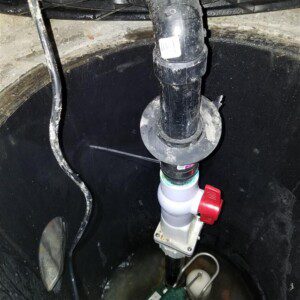
These sump pumps are functionally tested during our home inspections. Frequently, when sump systems are installed by non-professionals, they act like Sisyphus, pushing the water up until the well is evacuated, then allowing the expelled water to refill the sump. This wastes energy and prevents the sump absorbing drained water as it was designed. Check valves and bleed ports are the solutions. Like many aspects of homes, plumbing systems are best left to experts to design and install.
While proper slope around a home doesn’t have the appeal of granite countertops and hardwood floors, it can prevent major and expensive problems. A thorough home inspection can identify many problems related to slope and drainage and direct your attention to root causes. Slope-related problems don’t solve themselves and should be dealt with before things go downhill.

